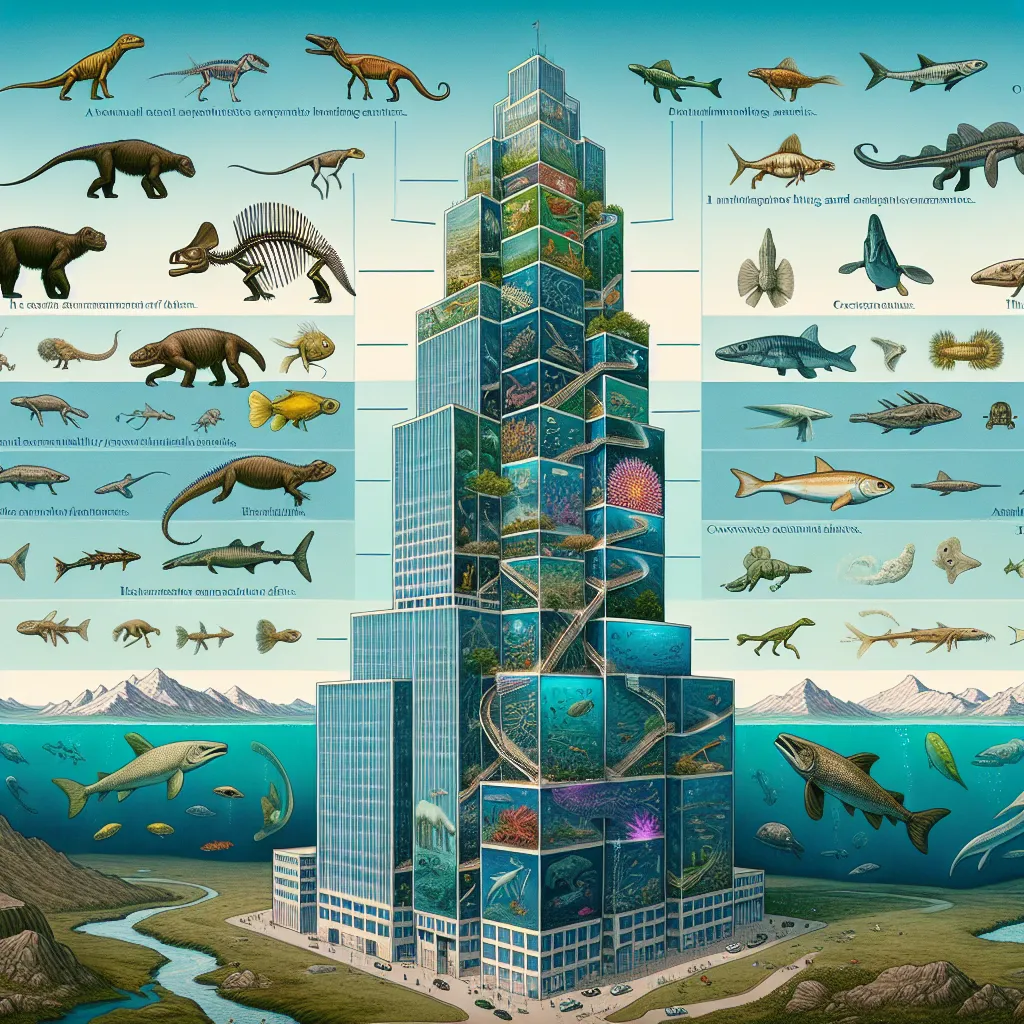We all know the idea that humans descended from apes. But if we travel back even further, our ancestors were much stranger. Imagine a skyscraper marking the history of life on Earth. The first floor represents when the Earth formed about 4.5 billion years ago. Each floor we ascend covers 50 million years, with the top being the present day.
250 million years ago, on the 87th floor, our ancestors were reptiles, resembling today’s lizards, turtles, and crocodiles. One floor down, 50 million years earlier, they were amphibians. Dip down two more floors, 400 million years ago, and our predecessors were primitive fish swimming in the oceans.
Fossil evidence paints a remarkable picture of evolution. Life evolved into new species step by step. However, the fossil record has gaps, missing links that challenge Darwin’s theory. The question is whether these gaps are because we haven’t found these fossils, or if Darwin was mistaken.
When Darwin wrote his theory in 1859, fossil records were sparse. There were no fossil remains of hominids, birds seemed to appear out of nowhere, and there was no evidence showing how fish transitioned to land-dwelling creatures. For Darwin’s theory to hold, scientists need to find these missing links.
One fossil hunter, Neil Shubin from the University of Chicago, embarked on a mission to find the transitional animal between fish and amphibians, clarifying how life moved from water to land. His search took him to Ellesmere Island, a place now near the North Pole, but whose ancient rocks once lay near the equator. These rocks are 375 million years old, just before the first land animals emerged.
For five years, Shubin and his team scoured this harsh landscape. In 2004, they experienced a breakthrough. Amidst layers of rocks, they found a flat-headed creature, unlike any known fish, similar to a crocodile. Upon further study in the lab, they discovered a creature that perfectly bridged the gap between fish and land animals. It had scales and fins like a fish but also a neck and flat head, much like land animals.
They named this creature Tiktaalik, which means “large freshwater fish” in Inuit. Tiktaalik had features of both fish and land animals, including bones in its fins resembling the basic bones in human arms. This discovery was monumental, showing that fish began to develop legs to survive on land, supporting Darwin’s theory. Yet, finding it was no easy feat; it took six years of persistent work to uncover Tiktaalik.
Despite the challenges, science has advanced since Darwin’s time. Fossil hunters have found numerous transitional fossils. Archaeopteryx and other bird fossils found in China bridge the gap between reptiles and birds. In Africa, excavations have unveiled over a dozen hominid species, tracing the path from ape-like ancestors to modern humans. These discoveries illustrate natural selection’s role in evolving new species, including us.
Yet, some species remain puzzling. Their existence defies easy explanation, even with natural selection in mind. But the journey of discovery continues, with each finding shedding more light on the intricate story of life on Earth.






